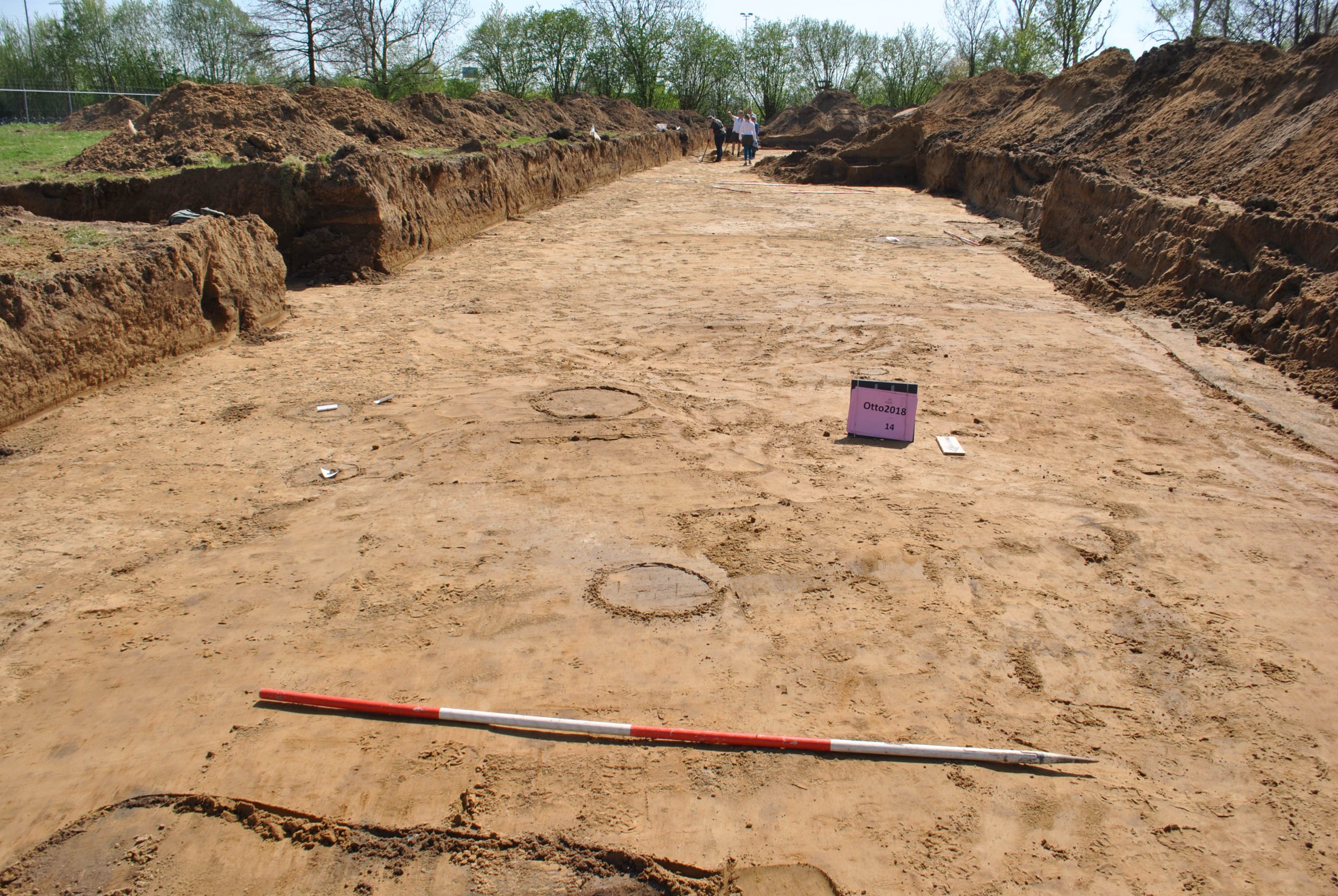Easier searching, easier sharing and created for archaeological datasets
With almost 120,000 datasets, our new Data Station Archaeology is the central place where you can easily store, find, share and publish archaeological data online. A large amount of easily searchable reports, photographs, tables and field drawings ready for reuse.
Foto: Fermin, H.A.C.; Dalfsen, van, JW, 2022, “Prehistorie tussen de zwembassins”, https://doi.org/10.17026/AR/DA7KGP, DANS Data Station Archaeology, V2; Otto2018_foto_014_8.jpg [fileName]
More than 80 new datasets
In the first three weeks that the Data Station Archaeology has been live, over 80 datasets have been uploaded and over 15,000 files, from 950 different datasets, have been downloaded. A few new datasets stand out and are definitely worth a look.
Prehistory between the swimming pools
For the construction of a new school complex, the old swimming pool site of the Graaf Ottobad in Zutphen was subjected to an archaeological survey. Because of the high archaeological expectations, a trial trench investigation was carried out immediately, in which remains from the Middle Ages and Early Iron Age were found. An excavation of an early Iron Age farmhouse and yard, dating to the first half of the 8th century BC (800-750 BC), followed. The whole thing gives the impression of having been used for one (or at most two) generations, which gives a detailed picture of the layout of such a farmyard. Moreover, it forms a nice addition to the topographical knowledge of late prehistoric Zutphen. In combination with data from earlier excavations, an increasingly detailed picture emerges of the occupation history and occupation dynamics around Zutphen, as well as a picture of the extent of the occupation.
Read the complete description of the aim, origin and scope of the research “Prehistory between the swimming pools” by Fermin, H.A.C.; Dalfsen, van, JW, 2022 and view the dataset (Dutch) via our Data Station Archaeology .
Wijnestein Castle Site
For the redevelopment of the archaeological monument site Wijnestein Castle, the municipality of Nieuwegein needed an overview of the archaeological remains present and to be expected. The results of the desk research show that the field research carried out earlier is rather fragmentary and that the results have not been properly catalogued. The only ‘hard’ observation concerns the results of the electrical resistivity survey from 1990, but here too, the location has not been precisely determined. It can be stated with a high degree of certainty that the foundation remains of Wijnestein, measured by resistance research, are still present in situ under the raised hill body. There is a high expectation that the Archaeological Monument Map (AMK) site (Monument number 2954) contains remains from the Roman period and possibly Late Iron Age and Early and Late Middle Ages.
Read the complete description of the aim, origin and scope of the research “Plangegebied kasteelterrein Wijnestein te Nieuwegein, gemeente Nieuwegein” by drs. K. Wink, 2022 and view the dataset (Dutch) via our Data Station Archaeology.
More information
99% of the archaeological datasets in our new Data Station Archaeology are now directly and publicly accessible. This makes it possible for stakeholders such as RCE, repositories, commercial archaeological businesses, universities and other enthusiasts to directly use data with guaranteed sustainability and reliability. View the archaeological collection or contact Hella Hollander, Data Station Manager Archaeology, if you have any questions.
Archaeology

